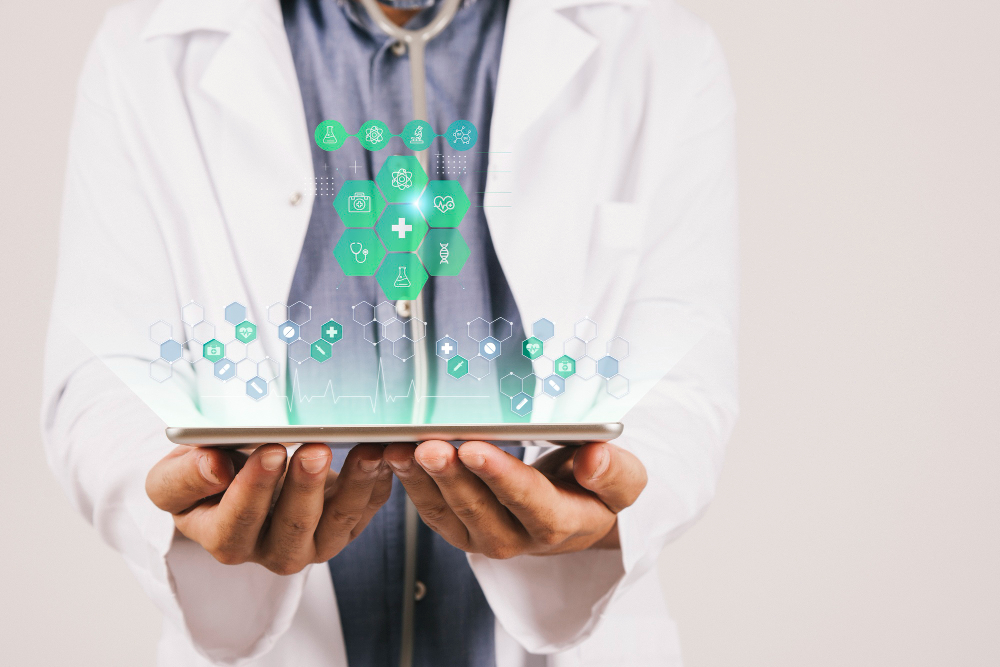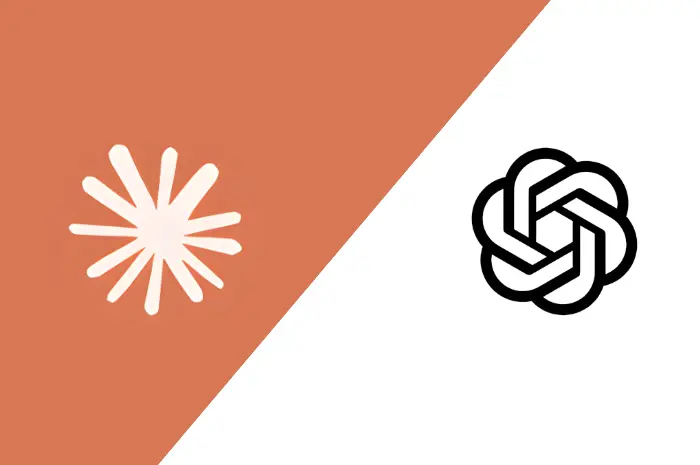Healthcare, like the majority of other businesses, has undergone a significant transition as a result of technological developments. Worldwide, mobile applications have grown in popularity, with an increasing number of individuals using them for anything from medical procedures to personal wellbeing and health. It is anticipated that by 2025, the worldwide medical application industry is anticipated to produce around USD 150 billion in revenue? Therefore, whether you’re considering developing a mobile healthcare application or improving an existing one, now is the opportunity to invest your funds.
However, before you begin developing health apps, it is critical that you grasp many elements of medical application development. This thorough guideline to healthcare application development will walk you through the steps necessary to create a creative and effective digital healthcare solution.
Reasons For Developing a Healthcare Application
1. Scheduling Appointments
Doing a consultation with health care experts is difficult for people who are stuck in long hospital queues. In the case of extensive infrastructure, it is acceptable to handle a large number of patients. However, whenever it comes to midsized or smaller facilities, providing room for patients is difficult.
Also, numerous occurrences occur when a doctor is unable to complete an operation or any other associated duty. This leads to people having to wait for hours for their turn to speak with a doctor.
Thus, an app can become a remedy for the stress associated with booking appointments with doctors. By designing the application for your healthcare business people from anywhere in the world may arrange appointments with doctors.
2. Management of Documents
Whether you operate a large, medium, or small clinic, the information and medical records of your patients will always be present. Furthermore, maintaining the integrity of data and documents is a top focus. As you never realize when you will require a comprehensive diagnostic history from a patient.
Not only is it critical to preserve patients’ diagnostic histories, but also to preserve the hospital’s personnel history. Without data, there is no market presence today. An application is capable of managing these documents.
This gives you another reason to hire a Mobile App Development Company for developing healthcare applications. Patients may also follow their medical history with a single click by using a healthcare mobile application.
3. Constant Monitoring Of Tests & Medical Examinations
Doctors can keep a tight eye on their patients’ diagnoses and other medical exams with the aid of a healthcare mobile application.
With a single click, the application’s start to end may be tracked. Apart from that, healthcare mobile applications that use advanced technology can give real-time accessibility to treatment procedures.
Close monitoring of diagnoses and healthcare checks may be readily tracked by healthcare staff using a standard hospital app. Hence, getting started with healthcare software development is a fantastic idea!
4. Payment Of Bills On Time
Through the healthcare mobile app, alerts concerning hospital equipment payments, medication payments, and regular payment of various bills may be made in a timely manner.
The human mind is incapable of recalling every detail at all times. Even if your facility is small, memorizing everyday information is simple. However, it is almost difficult to verify that every invoice is paid on time at a medium or large-sized hospital.
Furthermore, while retrieving data and files is simple, receiving timely reminders about paying bills, purchasing medical equipment, or purchasing new mattresses is a difficulty. As a result, medical, mobile applications with payment features and timely notifications might be quite beneficial.
5. Feedback
This point, however, will cover both sides—the clinic and the patient side. A patient can make comments on medical facilities and services delivered using an application. On the other side, workers can also offer feedback to higher authorities directly via digital means – something that is a bit more challenging in practice. Eliminating the paper-based feedback form in favour of a digital one will be a wise decision.
After receiving comments and feedback, you may begin determining what is required to enhance services or identify potential loopholes.
6. Concerns Regarding the Staff
Certain sensitive topics are frequently not disclosed or recognized in the work environment. The issue eventually escalates into other serious concerns, such as suicides, violence, or other criminal activity. Sexual assault in the workplace is fairly prevalent these days.
Integrating hospital applications with a function reserved for workers is a significant step toward addressing sexual or workplace inequalities. Any member of staff can submit a concern that will be seen only to the authority while remaining anonymous to others.
7. Remote Assistance
Occasionally, medical crises develop that necessitate the urgent attendance of a physician. The matter can be handled using a hospital’s mobile app. A patient has the option of notifying medical professionals. On the other hand, a temporary treatment can be administered while assistance is on the way.
Immediate assistance to patients in urgent situations can enhance your clinic’s image. Isn’t it incredible?
8. Mode of Payment
Nowadays, the majority of people are more interested in digital payment. Accepting physical cash appears to be a thing of the past.
Thus, in addition to accepting credit/debit card payments within the actual hospital roof, you may also provide a variety of payment alternatives to users of your application.
Types of Healthcare Applications
Healthcare Applications can be classified under 2 categories – Apps for Professionals and Apps for Patients. Let’s take a look at their types one by one:
Applications for Medical Professionals and Facilities
These applications are designed to benefit doctors, pharmacists, surgeons, and other medical facility personnel. As a result, they’re more complicated and packed with advanced capabilities that the typical user may find worthless.
- Medical Networking Apps – Although physicians are extremely busy and appear seldom on major social media platforms, they require a means of communicating with peers, sharing expertise, and improving the decision-making process.
- Billing Apps – Billing applications are designed to automate the whole billing process and to digitally transform activities such as claims administration, accountancy, cash management, and appointment scheduling in medical institutions.
- Telehealth – These applications enable clinicians to arrange appointments and consult with patients via in-app chat or video conversations. Telehealth applications benefit both medical institutions and patients since they allow people to obtain medical consultations in the comfort and privacy of their homes.
- Apps for medical prescriptions – Physicians may use prescription applications to select the appropriate medications for each patient, organise them into a handy list, establish and regulate dose to avoid drug-related problems, and revoke medications at any moment. Certain applications, such as RxEasy and STAT, enable patients to print prescriptions for easy presentation at any drugstore.
- Apps for medical records – Simply said, medical records applications are designed to make the method of acquiring and modifying patient health information easier. This comprises health checks, medications, and visits, as well as other data that clinicians use to monitor the entire treatment process.
Read the blog- Tips For Ensuring Your Mobile App Stays Updated and Valuable For Users
Applications for Patients
- Apps for mental health – Mental health applications are developed with the goal of making therapy more affordable, efficient, and adaptable. They can aid in the management of anxiety, worry, anxiousness, and sleep problems by utilizing pre-recorded chants, breathing exercises, and meditation.
- Monitoring of one’s health – This category includes applications that provide symptom checks, make drug recommendations, and offer treatment guidance. Additionally, they can aid in the management of present chronic diseases such as cancer, hypertension, and so on.
- Medical Education Apps – The primary goal of medical education applications is to provide a dependable library of current medical knowledge for students, physicians, and general users interested in learning more about healthcare.
- Trackers for medications – Medication monitoring applications are extremely popular in the field of health app development due to their general concept simplicity, since they assist consumers in taking their medications on schedule. Apart from basic scheduling and reminders, some applications can track certain medications in local pharmacies, informing users of the best deal.
Key Features to Consider When Developing an Effective Healthcare Mobile Application
Now, let’s take a look at some essential characteristics that any high-performance health application should include.
Each healthcare application should be simple to use. As they hold a great deal of health information, they must have the most advanced data security safeguards. Apart from these important characteristics, what are the value-added features that may help your application stand out in the fiercely challenging mobile app development market? Consider a few of them:
- Simple Signup and Log In: The initial stages of interaction between physicians and patients are signup and login. Ascertain that the registration procedure is simple for users. Users must be able to sign up by giving personal information such as their name, email address, and contact information. It should be a click and go experience. The fewer steps, the better. The same is true when logging in. Users should be able to access their accounts simply using the email or contact number with the OTP they gave at registration.
- Easy Modifications: Making an account should be simple and straightforward. Users should be able to post photographs and submit any other content they choose. However, in the case of physicians, all necessary information such as their specialization, expertise, clinic address, and contact information, as well as their licensed practitioner identification, should be provided. Also, users should be able to edit and amend their profiles at any moment.
- Locating and consulting physicians: The ideal healthcare application must have a smart filter that allows users to search for and filter physicians by specialty, expertise, recommendations, consulting cost, degree, and region. Patients and physicians should be able to communicate easily via the app. Patients should be able to give data about their illness, desired location, or doctor’s name in order to facilitate the search process. They should receive pertinent findings as a result of it.
- Choosing Healthcare Professionals: Users must be able to go forward and pick Doctors based on the results of their query after applying the criteria. Once they’ve narrowed their search, they must be able to view the doctor’s profile and specialty, as well as the doctor’s operating hours, fees, and clinic address. After selecting one, patients should be able to arrange OPD appointments exclusively through the application.
- Appointment Scheduling: Doctors should get clearance to accept or decline appointment requests if they are unable to visit the patient due to scheduling conflicts. The consumer should receive a confirmation email along with ID only when the doctor approves or accepts the request.
- Medication and Pill Alerts: This feature is ideal for healthcare mobile applications as it serves as a reminder for consumers about upcoming appointments. Regular reminders for prescription drugs or pills might also be added if needed.
- Multilingualism with cloud computing: To maximize the use of a healthcare mobile application, patients must be able to utilize it in their preferred or native language. This feature can assist patients in gaining a basic knowledge of your offerings. Apart from a bilingual app interface, cloud computing enables the easy storage of all data.
- Remote medical assistance: Attempting to contact doctors using in-app features or obtaining contact information from within the application can assist users in contacting their chosen practitioners from hundreds of miles away. Remote medical support enables clinicians to quickly assess symptoms and diagnose sickness in the event of an emergency.
Process of Medical App Development
- Recognize the Problem: There are several mobile healthcare applications currently on the market. How will yours provide value to end consumers and differentiate you from the competition? You must perform extensive market and competitor research in order to find gaps and challenges that your solution might potentially answer.Speaking with physicians, doctors, medical managerial staff, consumers, and other key stakeholders can provide insight into how to create a really useful, practical solution.
- Discover Your Audience: Did you know that about 75% of hospitals have attempted to sell a health application without doing a preliminary audience analysis? As a result, these applications were utilized by just around 2% of patients. Identifying your target audience enables you to ascertain their precise pain areas and requirements from your application, which you can utilize to build an efficient personalized healthcare solution via iOS application development. Conduct comprehensive market research to ascertain the needs of medical professionals as well as patients. You must be aware of your customer base and all applicable rules when creating the product. This will assist you in developing a realistic, efficient app, as well as in determining the modifications that will be required in later editions.
- Create a Design Concept: In general, an elder audience favors straightforward navigation and larger fonts, whereas a younger audience wants a vibrant user interface with enhanced functionality. Furthermore, the design will be determined according to whether your audience is composed of consumers or healthcare professionals. Analyze your rivals’ offerings and do a SWOT analysis to determine how to differentiate yours. Please remember that the UI will either make your application a success or a failure, so allocate sufficient time and money to getting it properly done by Mobile App Development Services.
- Develop an MVP: Developing a medical application may be an expensive endeavor. It is usually advised to begin with an MVP (minimum viable product). When developing the initial functioning version of your software, make use of readily available solutions. Ascertain with React Native Application Development that all third-party integrations run well.
- Evaluate & Collect Feedback: The purpose for starting with an MVP application development is to allow for testing, adding necessary functionality, and avoiding large-scale problems. Take into consideration that the application must be released as quickly as feasible. It can then be modified in the future based on market input. Customer feedback, reviews, early access and distribution testing all help you identify bugs and other issues that may be fixed to enhance the product with each upgrade.
- Extensive Distribution: The distribution of an application is totally dependent on its function. Those applications produced for a certain user community can be downloaded using a URL provided by the system. To reach a broader audience within a single business, it’s prudent to list the application on the app store. This can provide software developers with analytics that will assist them in planning future improvements.
- Monetization: Because the medical field provides several profitable business prospects, it’s unsurprising that you may monetize your app in a variety of ways. You have the option of enabling in-app purchases or using advertising. Also, you may generate income from your app’s subscriptions.
Concluding Thoughts
Mobile technological advancements are reshaping the future of healthcare. By 2022, the mobile health business is anticipated to grow at a CAGR of around 51%. With an increased need for fast, consumer-friendly, and secure medical apps, now is the time to engage in health application development and build forward-thinking solutions.







